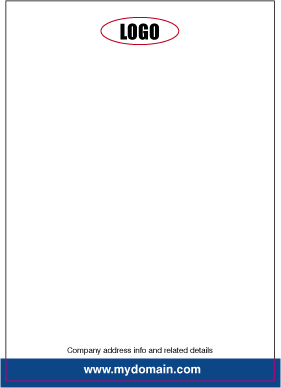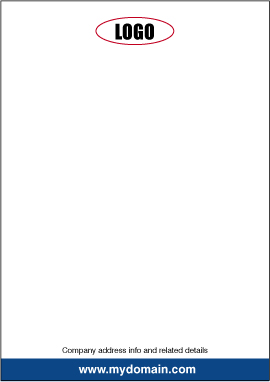Logo Design – first considerations
One of the most important decisions you need to make, before commissioning a designer to begin work on your logo, is to decide how many colours will be used to produce your stationery/brand.
For instance, if your logo has been produced using a 4 colour process then this will impact on every type of print job you may require in the future. Business stationery, marketing materials, clothing, signage, promotional items, advertising – there can be a cost implication on many of the above if you choose your logo in a 4 colour design.
A professional designer, who may cost you more initially, will ask the sort of questions that could actually save you a lot of money in the long run.
He/she will probably recommend your logo is created in a vector program such as Adobe Illustrator. This gives the flexibility of your logo being designed in maybe 1 or 2 spot colours, or 4 process colours should you decide no expense will be spared on promoting your brand.
An added bonus is that the logo will be scalable, i.e. it can be enlarged to any size, (banners & signs for instance) without any loss of quality.
You will undoubtedly come across ‘designers’ selling logos from £20 upwards and although you may feel this is a bargain, just consider for a moment how much you will probably spend over the years on your stationery & marketing materials. Probably thousands of pounds.
For £20 you are going to get, at most, an hour or so of someone’s time, so it’s probably worth considering spending a little more and employing someone who will find out about your business goals and who will develop a brand for you that will make your product/service stand out above the crowd.
It’s common knowledge in the design business that many of the ‘cheaper’ logo designers rework existing logos or worse still, use logo clip art which they can quickly adapt to suit your business name.
Paying a realistic price will hopefully find you someone who will listen to your design brief and produce multiple concepts, until these are narrowed down to a choice you’re happy with.
How to find the right logo designer?
Probably the best way is by recommendation however, we all have different tastes so always check the logo designer’s portfolio. All the good ones will have a website showing their creative work.
Many also have their own design style which may be to your liking, or not. Personally, at this stage I wouldn’t even be thinking about prices. Find someone who’s work you like and then see what it will cost afterwards.
If you have a firm logo design concept in your head, and don’t really need to see multiple concepts, then mention this to your favoured designer as he/she just might be able to offer a small discount if the job is going to take less time than usual.
Can I trust my printing to a designer?
Absolutely. Many logo designers will have their preferred printer who they are used to working with and know the printer’s way of accepting print-ready files. In fact, we have many design agencies on our books and we work as their second ‘pair of eyes’. It’s very easy to make an expensive mistake in print, so having a printer who ‘flightchecks’ your files, and who can foresee potential problems arising, is a huge benefit to many designers.
Can I trust my logo design to a printer?
Obviously I’m biased but there’s no reason why you can’t get a professionally-designed logo produced by your local printer. Many have an experienced designer onboard, whether full-time or freelance, so can offer the logo design service in a professional manner. This particular designer will usually have a very good working knowledge of print, so will know what works well in many situations.
As mentioned at the top of this article, colour choice can impact on costs, so a printer worth their salt will always advise on the best way to keep costs to a minimum, without sacrificing quality.
Is a logo really that important?
A good logo will always be remembered and if brand awareness is important to you then I’d suggest not buying a logo purely on price. A beautifully-designed brochure is not going to have the right impact if you’re using a poor logo.




Leave a Reply